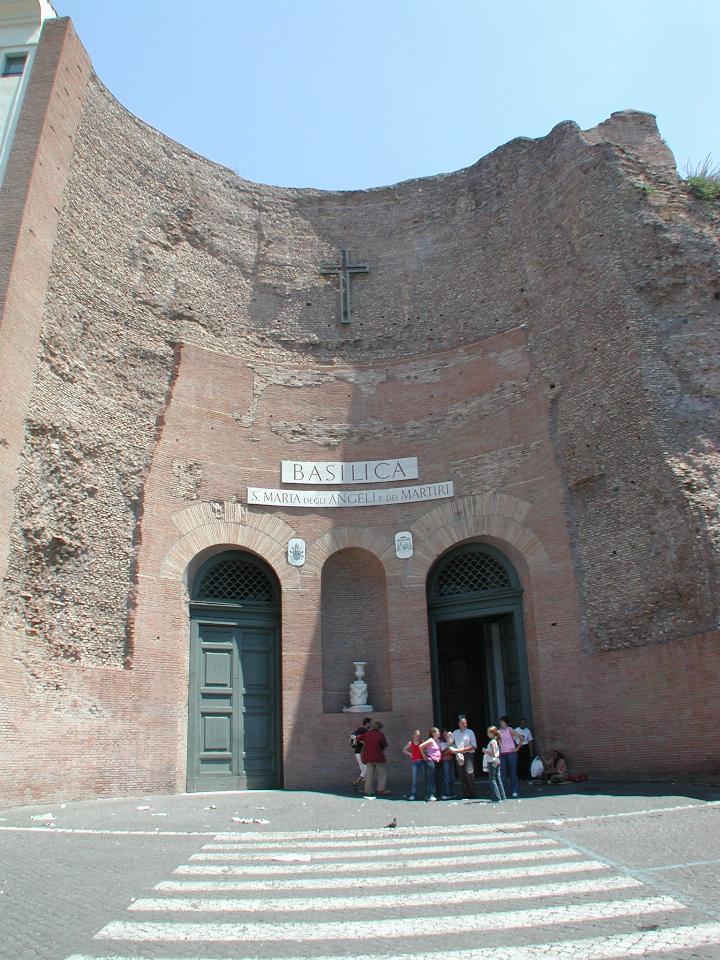
From here my journey was headed to Santa Maria Degli Angeli on Piazza Della Repubblica, more or less in front of Termini, if you don't count the bus station. I had not been in this Basilica before; in fact I'm not sure I even knew it was a basilica!
The church was built in the remains of the Baths of Diocletian by order of Pope Pius IV (1559 - 1565) after Fr. Antonio Lo Duca (a Sicilian priest) had a vision of angels in the ruins. Michelangelo designed it, starting work in 1563. After his death in 1564 (same year Fr. Lo Duca died!), the work was completed by Jacopa Lo Duca, nephew of Fr. Lo Duca. The floor has been raised a few feet, and the interior changed quite a bit, but the size is that of the original Baths. And it is BIG! Not as big as St. Peters, but very large even today. Major alterations were carried out in 1749 in preparation for the Holy Year of 1750.

The entrance, pretty much as the Romans of old would remember it. Although a facade was added in the 16th century, it was demolished in the 20th century to show the original building.
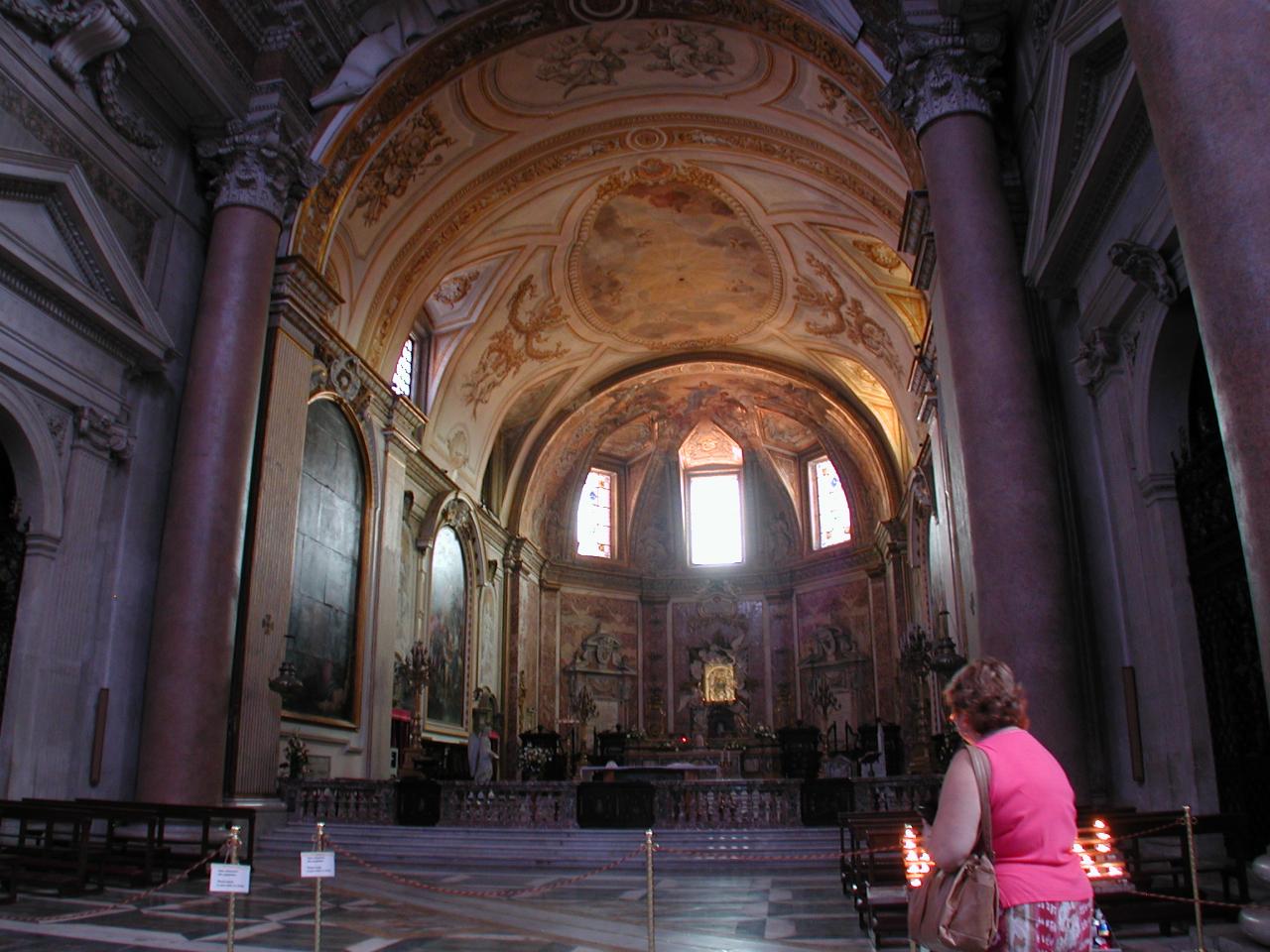
The main altar, made by Umberto Mastroianni in 1928. The entrance is behind the photographer here.
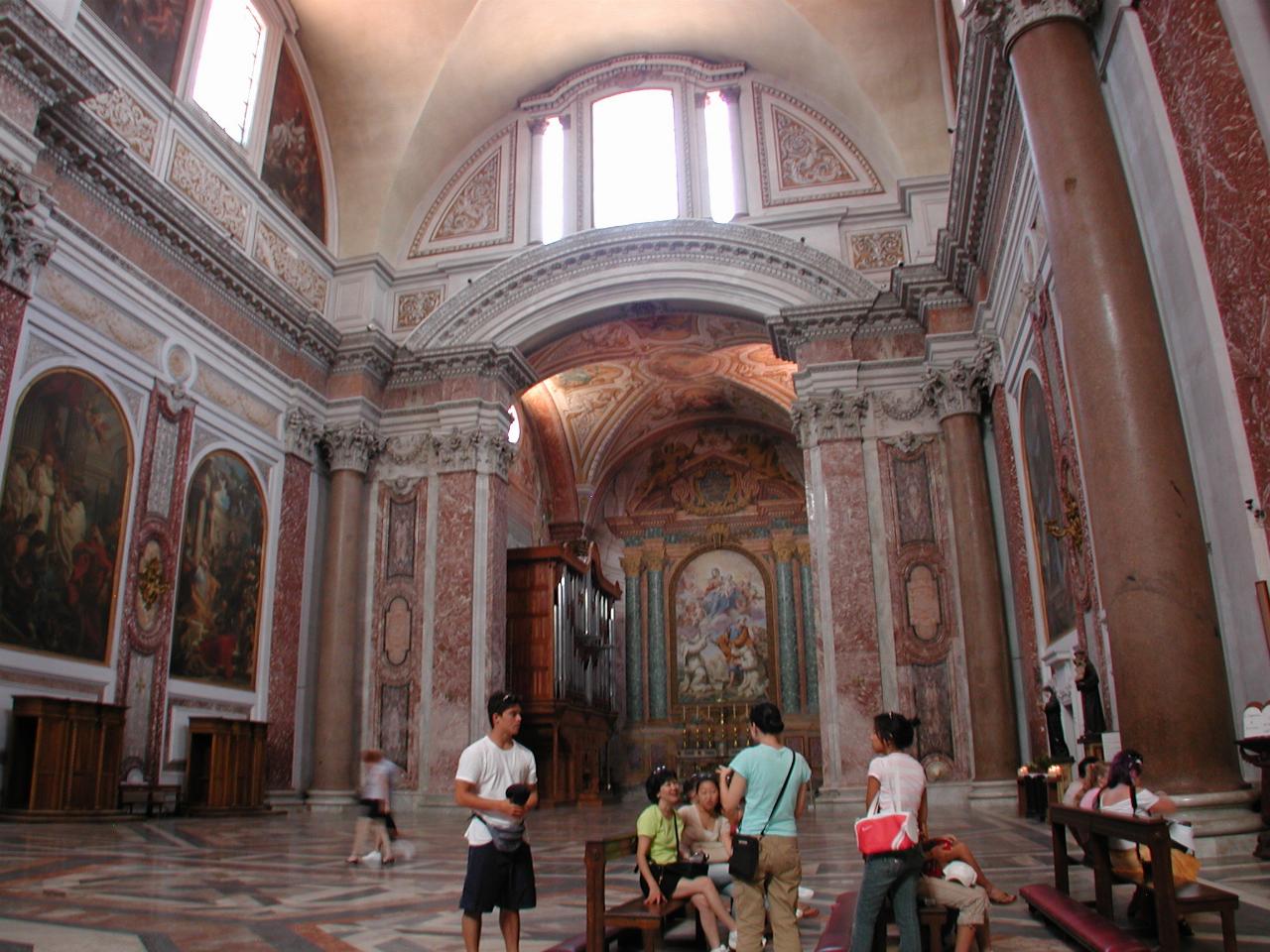
The Chapel of St. Bruno. Constructed as part of the restoration works for the 1700 Jubilee Year, it was originally the entrance into a chapel dedicated to the founder of the Carthusian Order. This is to the left of the photo above, with the entrance to the left of here.
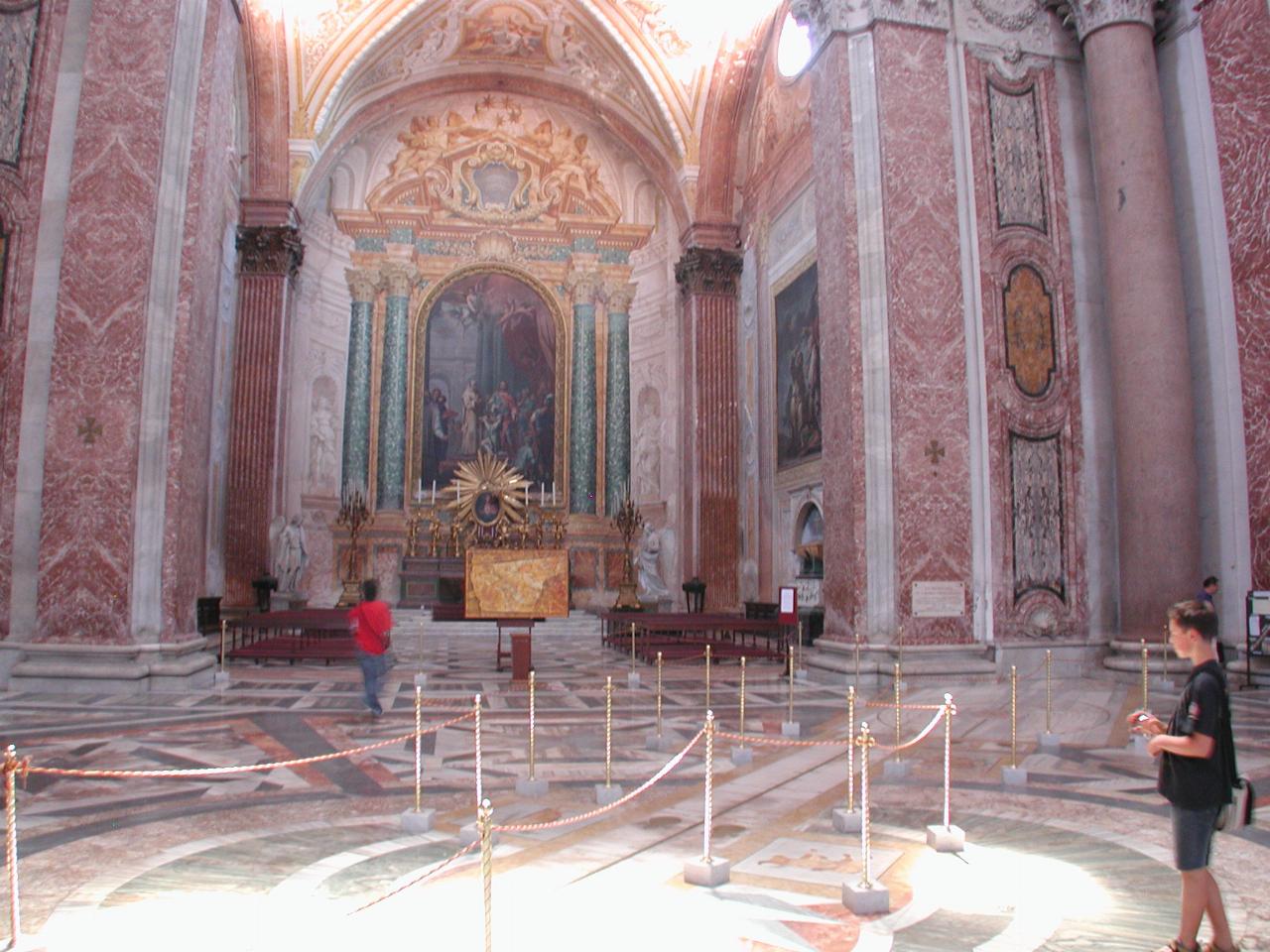
The chapel of Blessed Niccolo Albergati, a Carthusian Monk beatified by Pope Benedict XIV in 1744. This chapel was designed by Clements Orlandi in 1746. It is directly opposite the Chapel of St. Bruno (above). The roped off area in front is the Great Meridian line. These (other churches had them too) served three purposes:
Pope Clement XI ordered Bianchini to build this meridian in 1702; Bianchini in turn followed Michelangelo's design from 1561. First use was on October 6th, 1702. Some of the abilities of this meridian were lost in Vanvitelli's 1749 remodel.
In operation, a beam of light enters through a hole in the wall (above the top right of this photo) which is disguised as a lion's head. The beam follows the brass strip embedded in the floor.
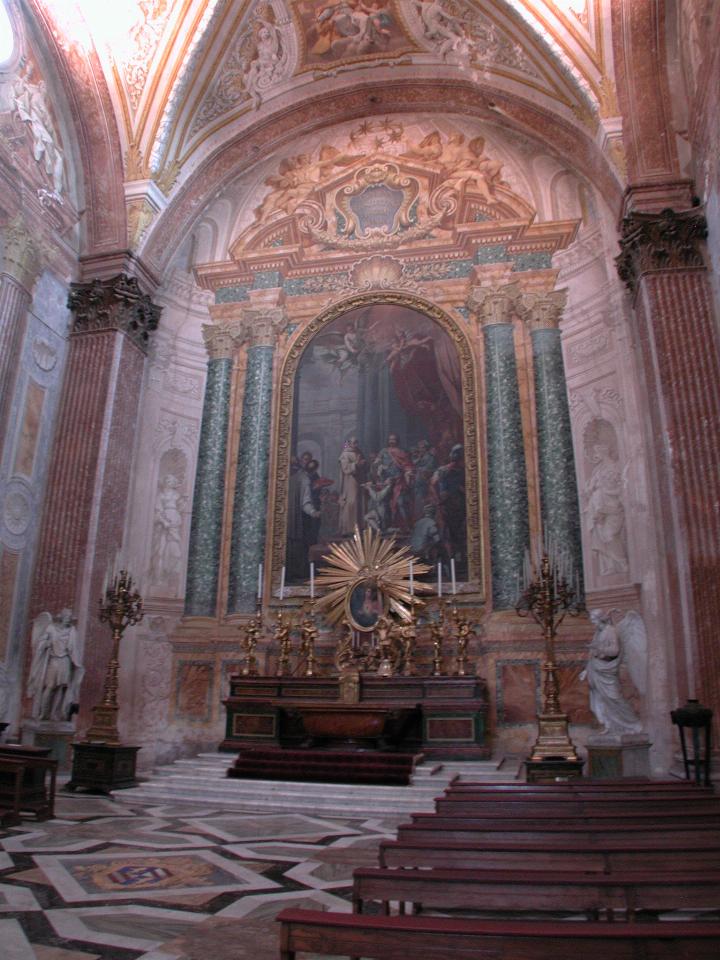
A more detailed view of the chapel of Blessed Niccolo Albergati; the altarpiece is A Miracle by Blessed Niccolo Albergati painted by Ercole Graziani in about 1746.
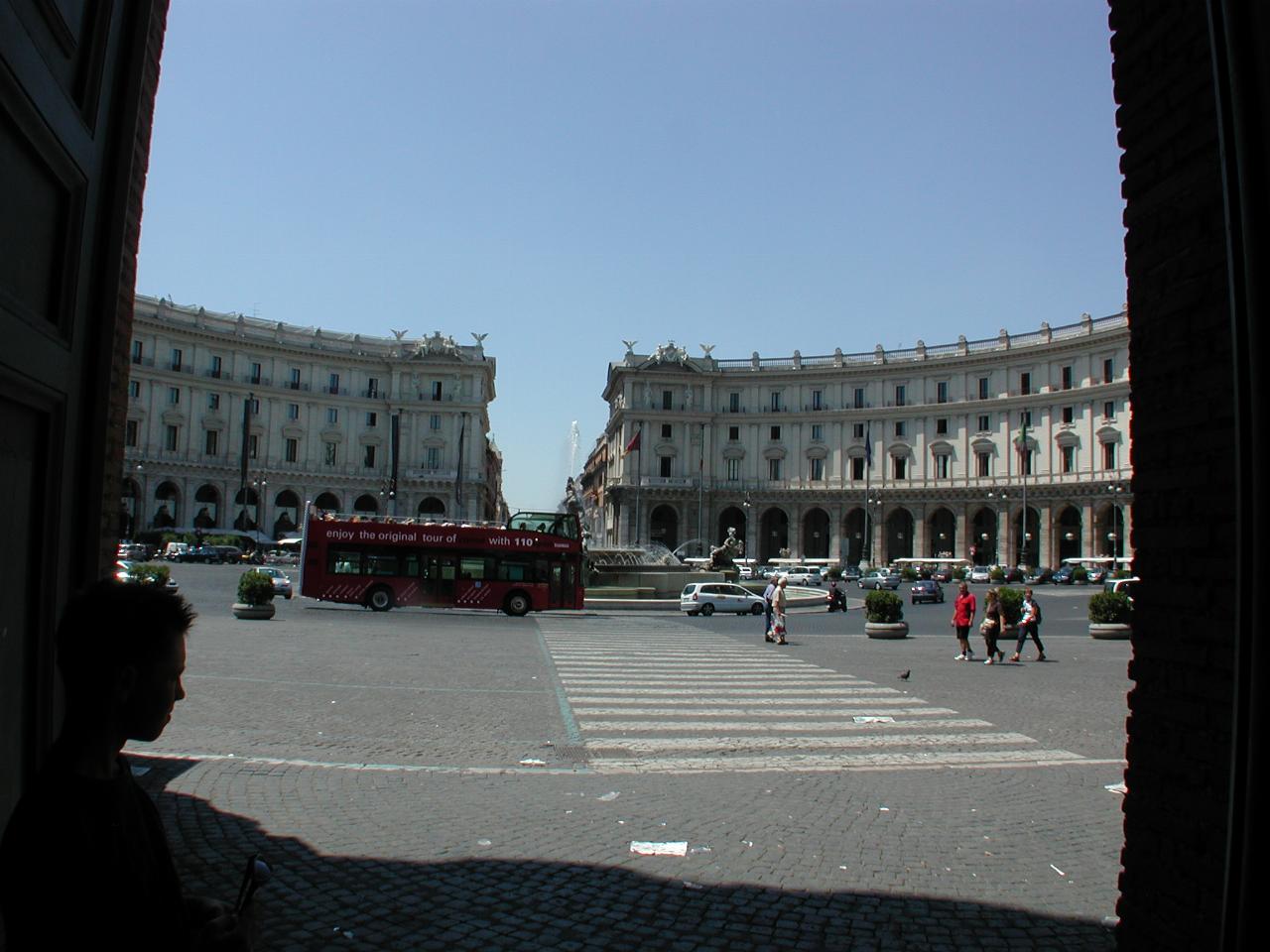
Looking through the Basilica's front door onto the Piazza Della Repubblica. This is quite a busy junction, and I was entertained by some delightful Italian street theatre. I heard sirens coming; not at all uncommon in Rome. Then some Carabineri cars pulled into the roundabout, holding out things that look like large lollipops; these are used to hold up other traffic until the large black limousine appears and moves through the roundabout without hinderance. Although one driver tried to run the blockade (through ignorance or on purpose I can't tell), until one of the officials holding his lollipop waved a finger at the would-be offender. All very comic, albeit quite effective.
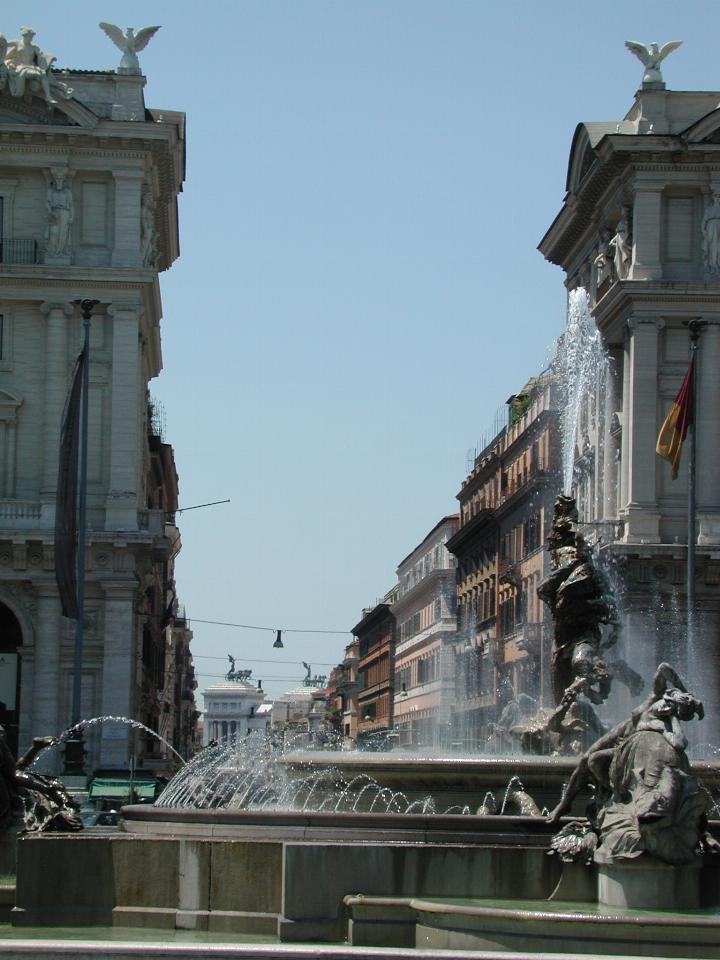
Looking down Via Nazionale towards Victor Emmanuel Monument, just visible over the fountain, although better seen here.
From here I walked back to the hotel, to catch up on chores, and do some reading to plan the post-Rome part of my trip. While travel and hotels were booked, activities during the days were not.
And all this came to an end when the tour bus arrived with Peter and Yvonne (and a few others!). After socialising, I left them to unpack. Later we met for dinner at Armando's, the restaurant I enjoyed so much on my first night. Then we had a bit of a stroll around the neighbourhood before turning in for the night.